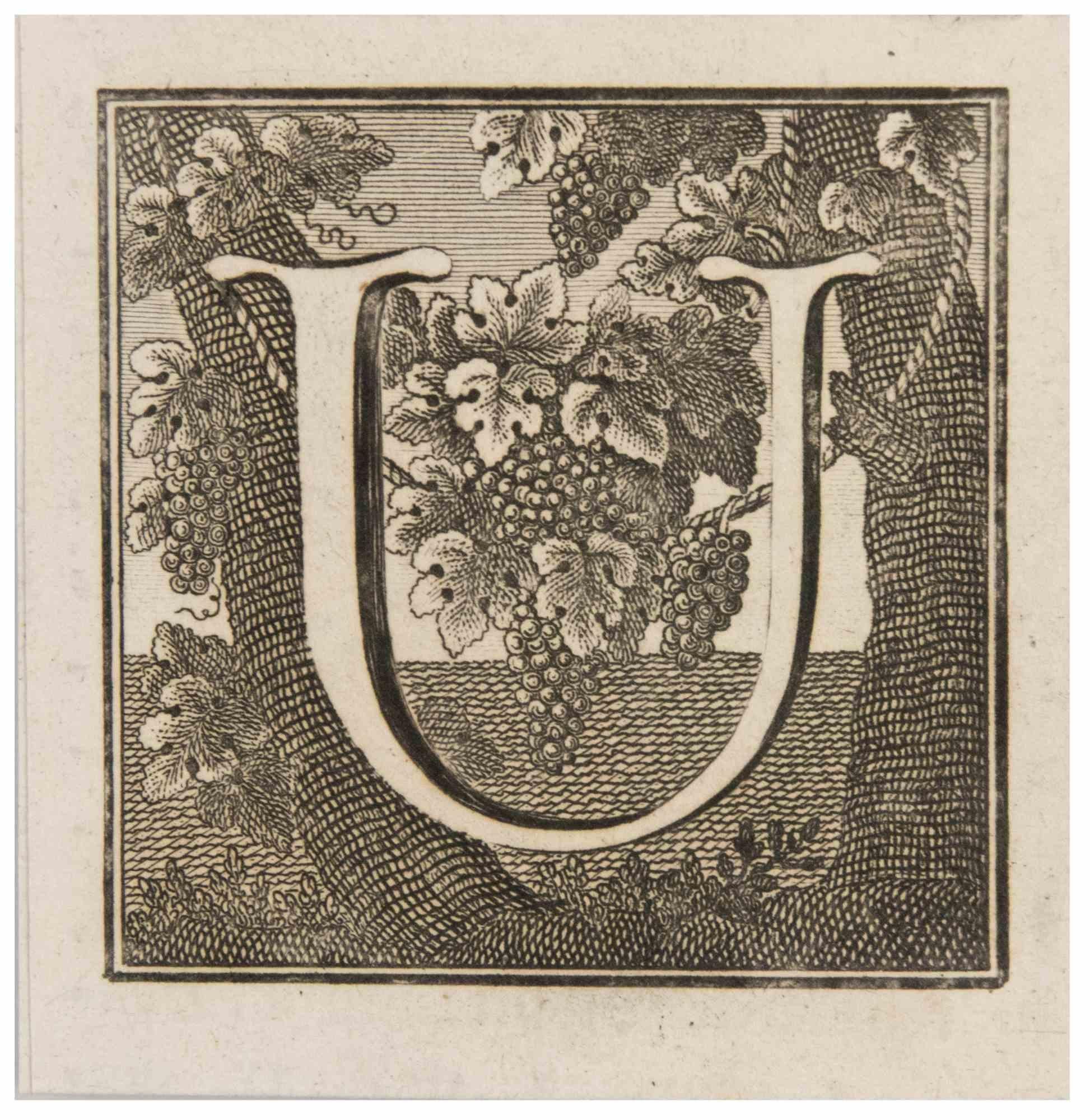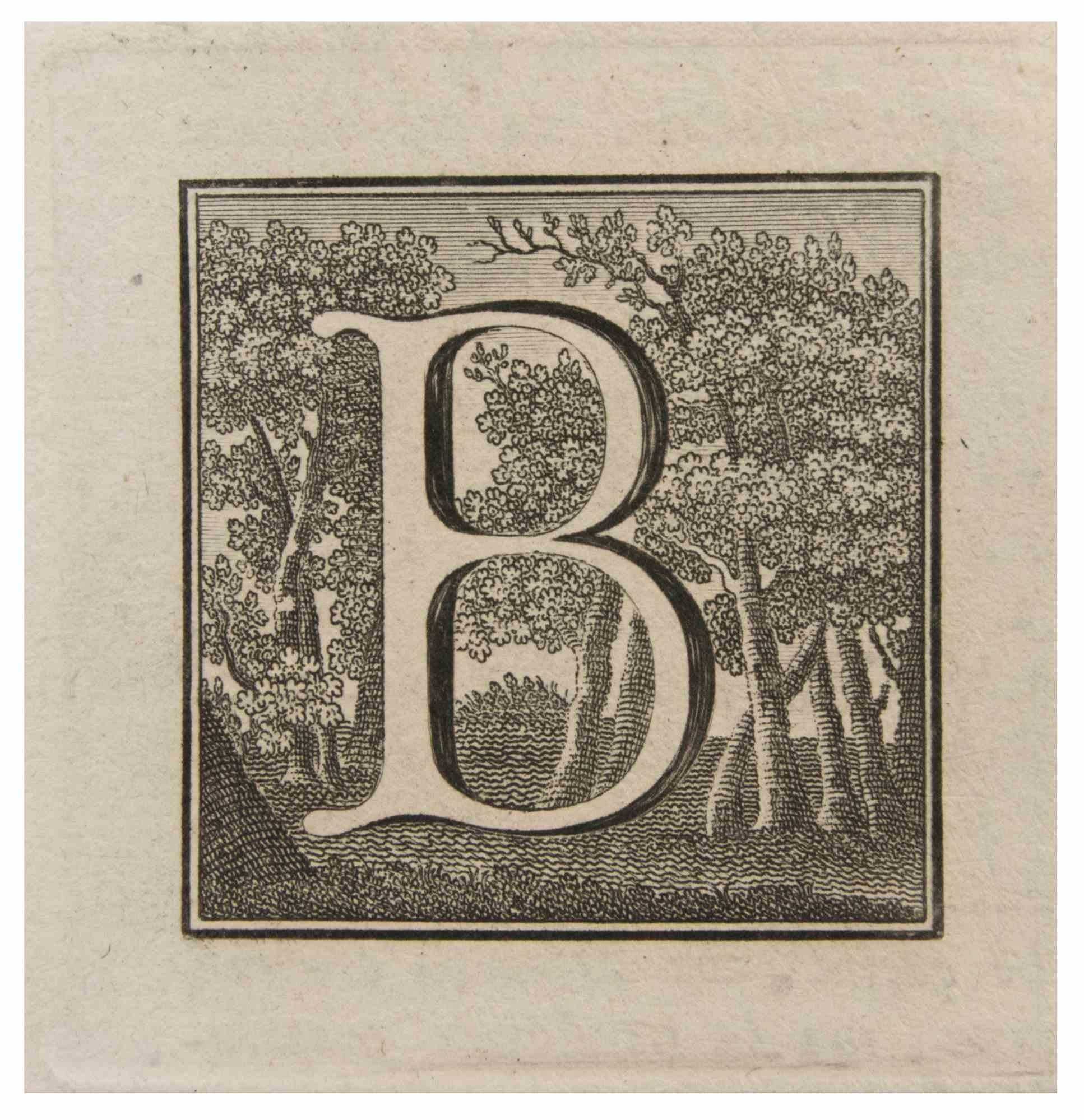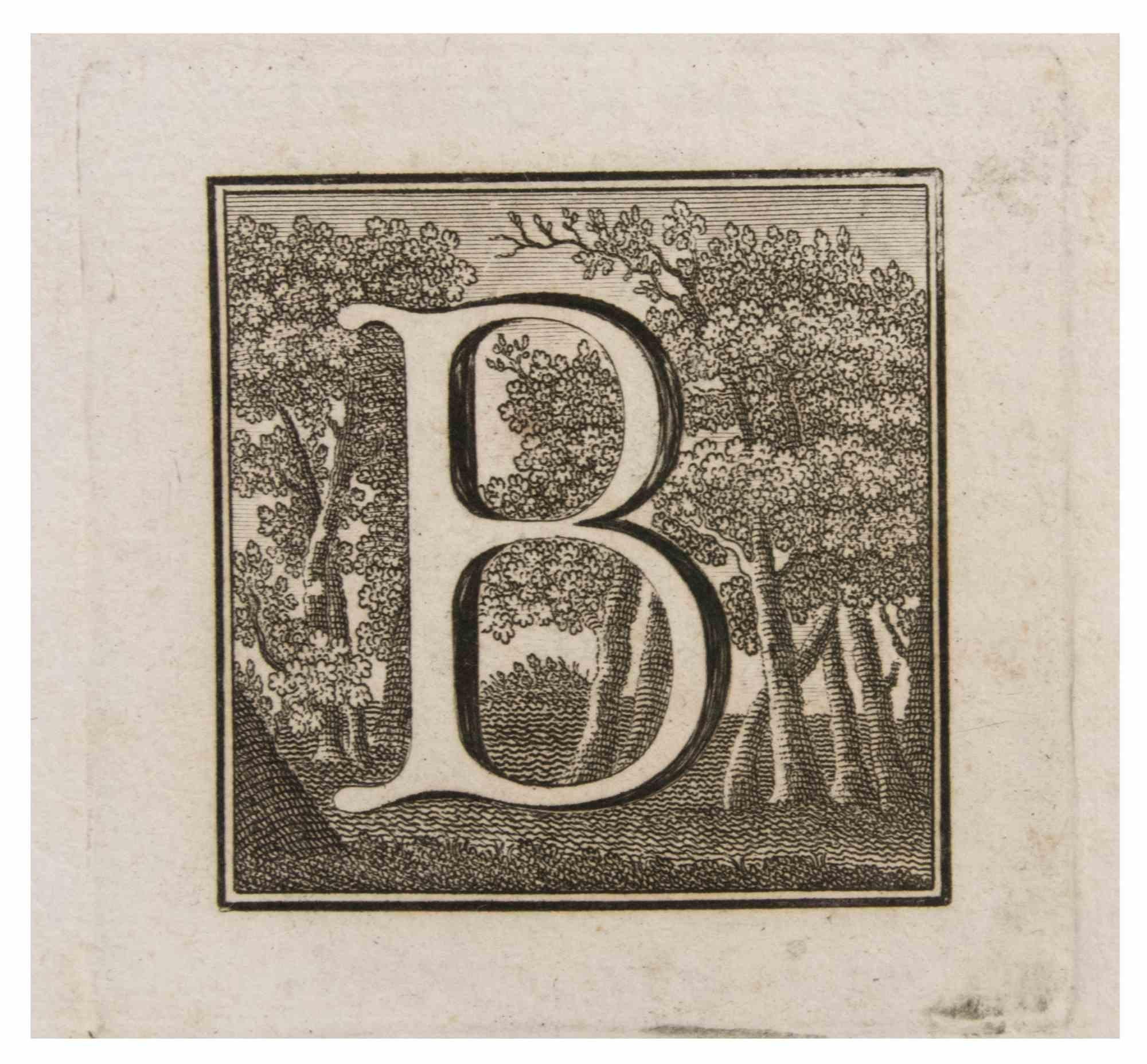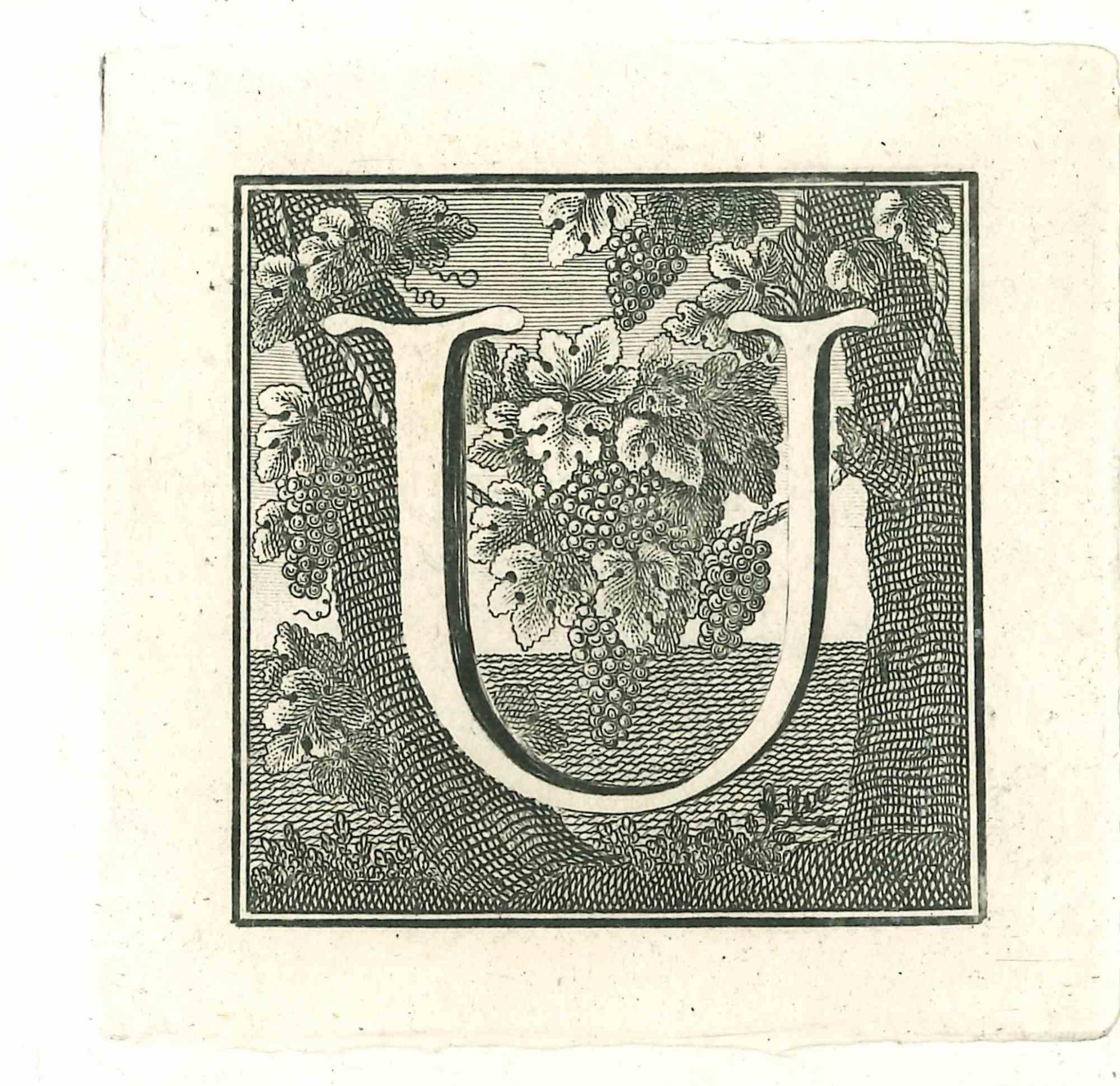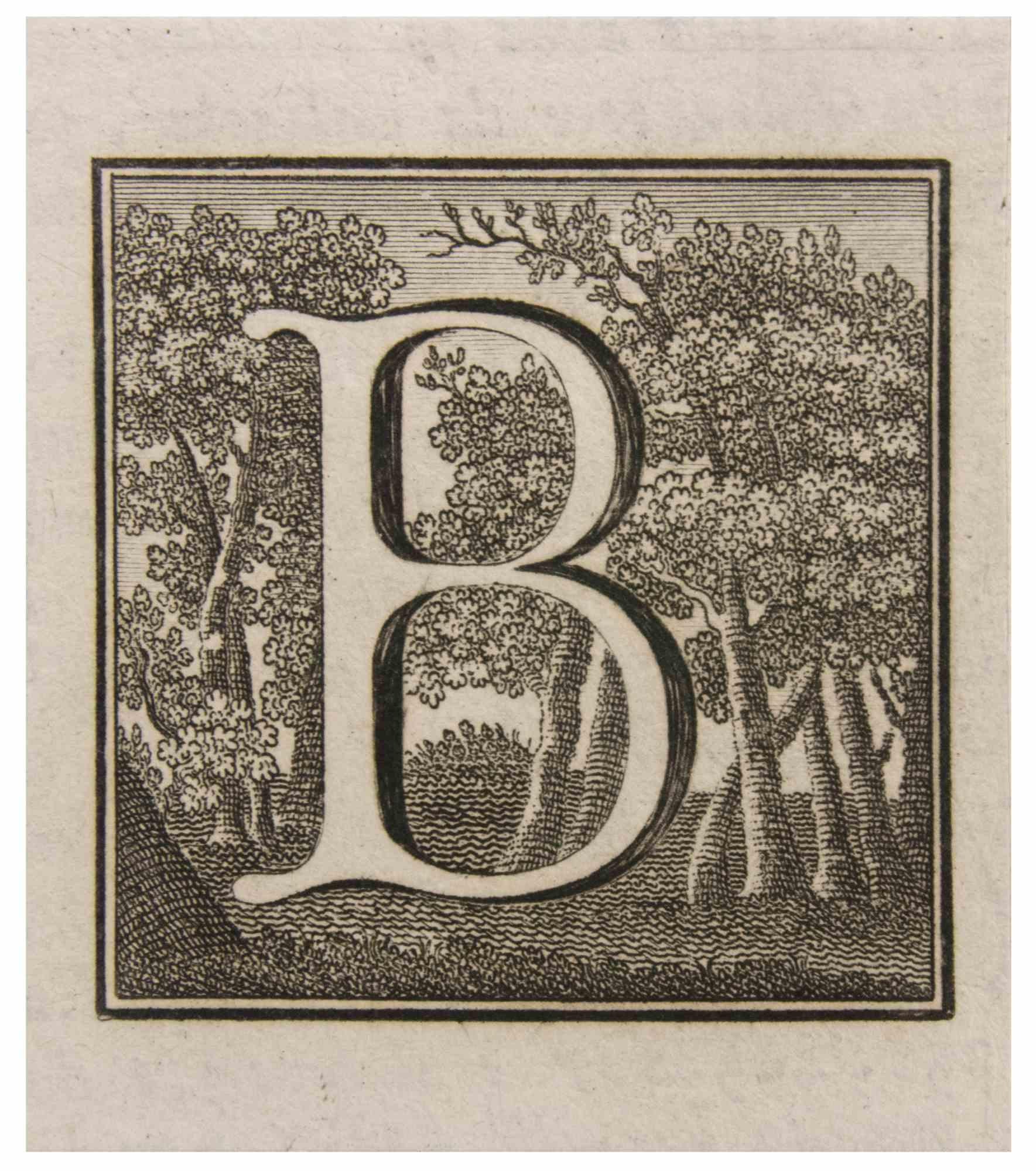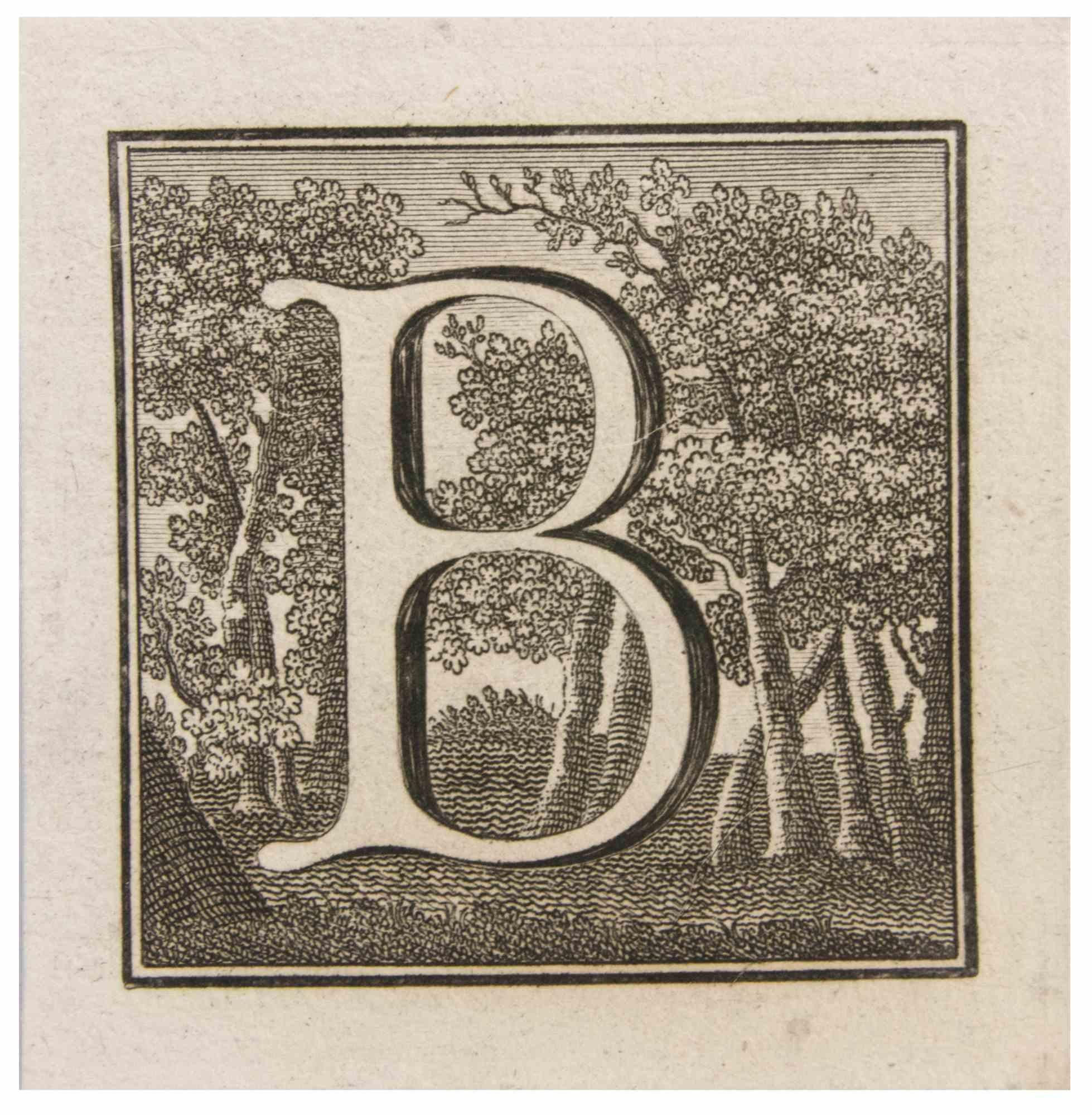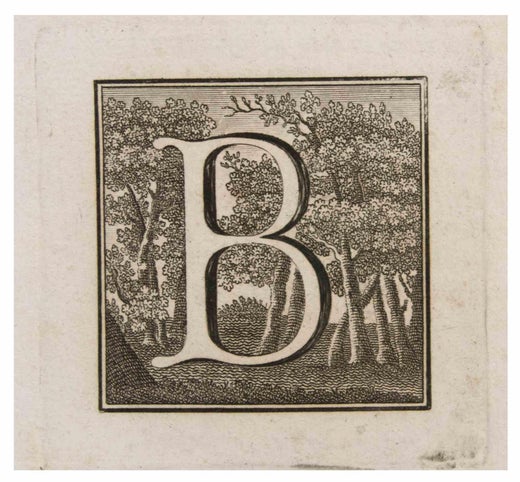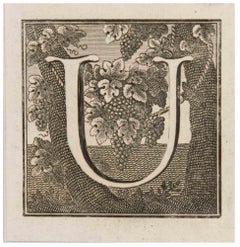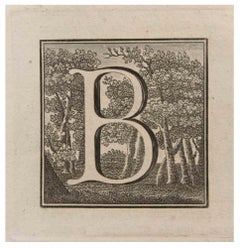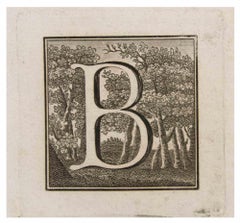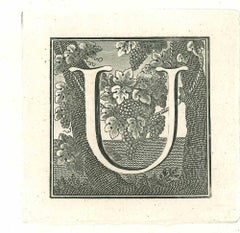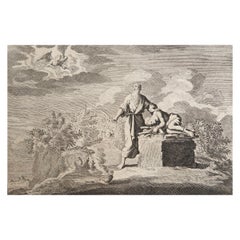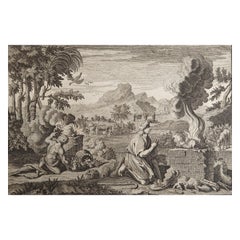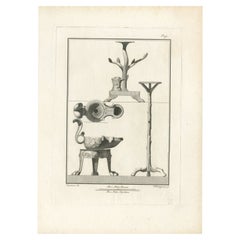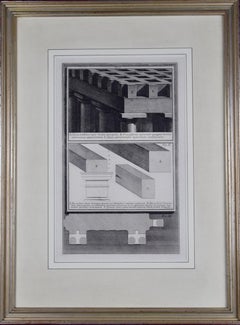Items Similar to Antiquities of Herculaneum-Letter U - Etching by Giovanni Mignani - 18th Century
Want more images or videos?
Request additional images or videos from the seller
1 of 2
Giovanni MignaniAntiquities of Herculaneum-Letter U - Etching by Giovanni Mignani - 18th Century18th Century
18th Century
$237.06
£177.53
€200
CA$331.77
A$363.76
CHF 189.95
MX$4,377.43
NOK 2,394.07
SEK 2,251.04
DKK 1,523.50
About the Item
Antiquities of Herculaneum - Letter of the Alphabet U, from the series "Antiquities of Herculaneum", is an etching on paper realized by Giovanni Mignani in the 18th century.
Good conditions except for some foxings due to the time.
The etching belongs to the print suite “Antiquities of Herculaneum Exposed” (original title: “Le Antichità di Ercolano Esposte”), an eight-volume volume of engravings of the finds from the excavation of the ruins of Herculaneum in the Kingdom of Naples (now Campania, Italy).
It was published between 1757 and 1792 by the Regia Stamperia, and copies were delivered to selected recipients across Europe.
Despite the title, the Antiquity of Herculaneum shows objects from all the excavations undertaken by the Bourbons in the Gulf of Naples. These include Pompeii, Stabia and two sites of Herculaneum: Resina and Portici.
The Bourbon King Carlo appointed fifteen scholars creating a new “Herculaneum Academy” to study the artifacts and publish the results of the archaeological excavations of the sites.
The engravings are of high quality and the accompanying text shows a large scholarship.
They were realized by 25 prominent artists involved by the King to prepare drawings and engravings on the finds, among which we can find Giovanni Elia Morghen, Carlo Nolli, Luigi Vanvitelli and Giovanni Battista Casanova.
The “Antiquities” was designed more to amaze readers with the quality of the objects in the collection of the King of Naples than to be used in research., following and increasing the interest of 18th century society for the classical culture and Art in particular.
Through the exaltation of the classical concept of proportions and harmony, the book was of inspiration to the neoclassical movement in Europe, giving artists and decorators access to a huge shop of Hellenistic motifs.
Ref.:
National Gallery (Washington), Mark J. Millard Architectural, IV (2000), no. 1;
L. Garcia y Garcia, Nova bibliotheca pompeiana (2 v., 1998);
Royal Institute of British Architects, British Architectural Library ... Early printed books, 1 (1994), no. 112.
U. Pannuti, 'Incisori e disegnatori della Stamperia Reale di Napoli nel secolo XVIII: la pubblicazione delle Antichità di Ercolano', in Xenia antiqua, 9 (2000), p. 151-178;
V. Trombetta, 'L'edizione de Le Antichità di Ercolano esposte' in Rendiconti dell'Accademia di Archeologia, lettere e belle arti di Napoli , 59 (1984), p.151-172.
- Creator:Giovanni Mignani
- Creation Year:18th Century
- Dimensions:Height: 2.76 in (7 cm)Width: 2.76 in (7 cm)Depth: 0.08 in (2 mm)
- Medium:
- Movement & Style:
- Period:
- Framing:Framing Options Available
- Condition:Insurance may be requested by customers as additional service, contact us for more information.
- Gallery Location:Roma, IT
- Reference Number:Seller: T-1497641stDibs: LU650314762292
undefined
About the Seller
4.9
Platinum Seller
Premium sellers with a 4.7+ rating and 24-hour response times
1stDibs seller since 2017
7,745 sales on 1stDibs
Typical response time: 2 hours
- ShippingRetrieving quote...Shipping from: Grasse, France
- Return Policy
Authenticity Guarantee
In the unlikely event there’s an issue with an item’s authenticity, contact us within 1 year for a full refund. DetailsMoney-Back Guarantee
If your item is not as described, is damaged in transit, or does not arrive, contact us within 7 days for a full refund. Details24-Hour Cancellation
You have a 24-hour grace period in which to reconsider your purchase, with no questions asked.Vetted Professional Sellers
Our world-class sellers must adhere to strict standards for service and quality, maintaining the integrity of our listings.Price-Match Guarantee
If you find that a seller listed the same item for a lower price elsewhere, we’ll match it.Trusted Global Delivery
Our best-in-class carrier network provides specialized shipping options worldwide, including custom delivery.More From This Seller
View AllAntiquities of Herculaneum-Letter U - Etching by Giovanni Mignani - 18th Century
Located in Roma, IT
Antiquities of Herculaneum - Letter of the Alphabet U, from the series "Antiquities of Herculaneum", is an original etching on paper realized by Giovanni Mignani in the 18th centur...
Category
Late 18th Century Old Masters Figurative Prints
Materials
Etching
Antiquities of Herculaneum-Letter B - Etching by Giovanni Mignani - 18th Century
Located in Roma, IT
Antiquities of Herculaneum - Letter of the Alphabet B, from the series "Antiquities of Herculaneum", is an etching on paper realized by Giovanni Mignani in the 18th century.
Good ...
Category
Late 18th Century Old Masters Figurative Prints
Materials
Etching
Antiquities of Herculaneum - Letter B - Etching by G. Mignani - 18th Century
Located in Roma, IT
Antiquities of Herculaneum - Letter of the Alphabet B, from the series "Antiquities of Herculaneum", is an original etching on paper realized by Giovanni Mignani in the 18th centur...
Category
Late 18th Century Old Masters Figurative Prints
Materials
Etching
Capital letter U from Antiquities of Herculaneum Exposed-Etching-18th Century
Located in Roma, IT
Capital letter U from the Antiquities of Herculaneum Exposed, original etching from the end of the 18th century, made by Various Old Masters.
In very good condition, except for some...
Category
Late 18th Century Old Masters Figurative Prints
Materials
Etching
Antiquities of Herculaneum-Letter B - Etching by Giovanni Mignani - 18th Century
Located in Roma, IT
Antiquities of Herculaneum - Letter of the Alphabet B, from the series "Antiquities of Herculaneum", is an original etching on paper realized by Giovanni Mignani in the 18th centur...
Category
Late 18th Century Old Masters Figurative Prints
Materials
Etching
Antiquities of Herculaneum-Letter B - Etching by Giovanni Mignani - 18th Century
Located in Roma, IT
Antiquities of Herculaneum - Letter of the Alphabet B, from the series "Antiquities of Herculaneum", is an original etching on paper realized by Giovanni Mignani in the 18th centur...
Category
Late 18th Century Old Masters Figurative Prints
Materials
Etching
You May Also Like
Original Antique Print After Jan Luyken, Amsterdam, Genesis XXII. 1724
Located in St Annes, Lancashire
Wonderful copper-plate engraving after Jan Luyken
Published by Marten Schagen, Amsterdam. 1724
Text on verso
The measurement given is the paper size.
Category
Antique 1720s Dutch Renaissance Prints
Materials
Paper
Original Antique Print after Jan Luyken, Amsterdam, Genesis IV, 1724
Located in St Annes, Lancashire
Wonderful copper-plate engraving after Jan Luyken
Published by Marten Schagen, Amsterdam. 1724
Text on verso
The measurement given is the paper size.
Category
Antique 1720s Dutch Renaissance Prints
Materials
Paper
Herculaneum Monuments, 1762: Bayardi's Engraving Plate 61
Located in Langweer, NL
Antique print originating from 'Le Antichita di Ercolano Esposte'. A vast survey of the bronzes, statues, wall-paintings, and monuments of Herculaneum. This monumental work was the f...
Category
Antique 18th Century Prints
Materials
Paper
18th Century Etching of Ancient Roman Architectural Objects by Giovanni Piranesi
By Giovanni Battista Piranesi
Located in Alamo, CA
A. Tigna Protensa Super Media Epistylia, B. Praecisiones Tigorum Quaqua Versus Extrinsectus Apparentium, C. Opae Extremitates Tigorum Contintes, Fig. I, plate 88 from "Vasi, Candelab...
Category
Mid-18th Century Old Masters Figurative Prints
Materials
Etching
Original Antique Print After Jan Luyken, Amsterdam, Genesis XXI, 1724
Located in St Annes, Lancashire
Wonderful copper-plate engraving after Jan Luyken
Published by Marten Schagen, Amsterdam. 1724
Text on verso
The measurement given is the paper size
Category
Antique 1720s Dutch Renaissance Prints
Materials
Paper
Antique Print of the Monuments of Herculaneum by Bayardi, 1762
Located in Langweer, NL
Antique print originating from 'Le Antichita di Ercolano Esposte'. A vast survey of the bronzes, statues, wall-paintings, and monuments of Herculaneum. This monumental work was the f...
Category
Antique 18th Century Prints
Materials
Paper
More Ways To Browse
Montreux Jazz Poster
Murakami Francis
Nuremberg Chronicle
Oreo Art
Orientalist Prints Art
Paul Mccrane
Peter Max Moon
Picasso Banderilles
Picasso Clown
Picasso Etching Vollard Suite
Picasso Les Dejeuners
Picasso Lithograph 1974
Picasso Silkscreen
Polo Antiques
Pop And Scott
Punk Original
R C Gorman Originals
Rene Magritte Poster
